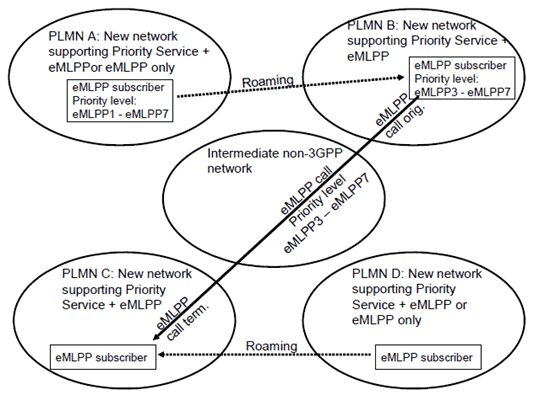Content for TR 22.952 Word version: 18.0.1
0…
4…
4.8…
5
5.1
5.2
5.3
5.4
5.5
5.6
5.7
5.8
5.9
5.10
5.11
5.12
5.13
6…
A…
B
B.1
B.2
B.3
B.4
B.5
B.6
B.7
B.8
B.9
C
D…
B.2 eMLPP call to eMLPP subscriber in Priority service + eMLPP network p. 40
This use case is intended to illustrate the new Priority Service + eMLPP functionality fulfils the eMLPP requirements.

Figure B.2: eMLPP call to eMLPP subscriber in Priority Service + eMLPP network
(⇒ copy of original 3GPP image)
(⇒ copy of original 3GPP image)
Use case 2:
- Two eMLPP subscribers, each with assigned maximum and default priority (precedence) levels in the range of eMLPP1 - eMLPP7 belong to two different new networks (A and D) supporting both Priority Service and eMLPP or eMLPP only.
- The eMLPP subscribers roam to two different new networks (B and C) supporting both Priority Service and eMLPP where they will have priority (precedence) levels in the range of eMLPP3 - eMLPP7.
- The eMLPP subscriber in (B) sets up an eMLPP priority call towards the eMLPP subscriber in (C.)
- The call is routed via an intermediate non-3GPP network.